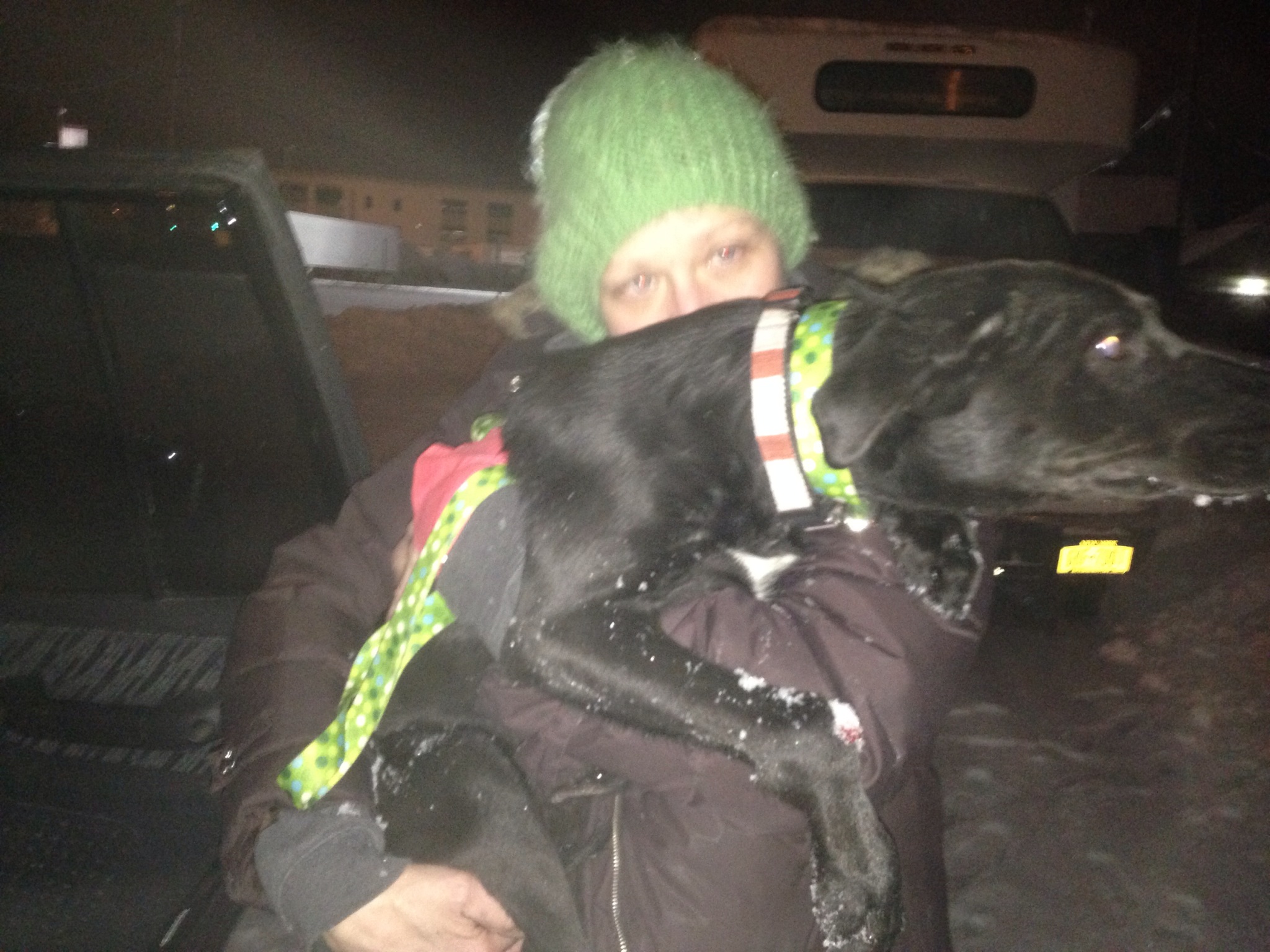Jenn and I headed toward Columbus with her dog Maia on Friday morning. We first went to The Wayne & Geraldine Kuhn Fine Arts Gallery at the Marion Campus of Ohio State University to take pictures of Jenn's show Rec•ord, which has been on display since the beginning of the year. The gallery is small, and the satellite campus is not nearly as well attended as the main campus in Columbus, but the guestbook revealed quite a few visitors.
The show itself was of Jenn's ambrotype photograms of small objects. She uses a wet-plate collodion process to create the one-of-a-kind ambrotype positives on anodized aluminum. Her level of mastery of that technique is on par with a fairly small set of experts in the field. Her work speaks to the distortion of the photographic process as a way to reliably represent objects and people.
Afterward we went to Columbus to visit her friend Heather Wetzel. We walked near Heather's house and stopped by Jeni's Splendid Ice Creams (4247 N. High St., Columbus, OH). On this visit, I found it too busy and rushed to make a proper assessment, but the ice cream was indeed good. I didn't find it substantially better than Hedonist Artisan Ice Cream, though, and actually found the huge array of flavors to be more daunting than appealing.
On Saturday morning, Ted and Ali arrived to join us for the weekend. We headed to Whole World Natural Restaurant (3269 N. High St., Columbus, OH) for lunch. As vegan food goes, it's hit-and-miss, but I went with the safe bet of avocado on a croissant. Afterward we went to the excellent Pattycake Bakery (3009 N. High St., Columbus, OH) and had some great vegan treats.
Heather wanted to stop by the opening of a The Mirage and the Rainbow: 2014 Department of Art Master of Fine Arts Thesis Exhibition at OSU's Urban Arts Space (50 W. Town Street, Suite 130 in the Historic Lazarus Building, Columbus, Ohio 43215) so she could see some of her students' work. Overall it was a good show. Ali, Jenn, and Heather took part in this "Dr. Armbruster's Laboratories" "experiment" where they were measured then drew with a paint drip test. It was a lot of fun.
The "Armbruster" name was fictitious, but I had to look up the list of MFA candidates to remember the ones I wanted, and didn't discern who did that work. The complete list from the website included: Jacci Delaney (Glass), Jonathan Fitz (Ceramics), Leah Frankel (Sculpture), Andrew Frueh (Art and Technology), Keith Garubba (Printmaking), Nick George (Photography), Anne Keener (Painting & Drawing), Gun Young Kim (Ceramics), Amanda Kline (Photography), David Knox (Printmaking), Sage Lewis (Painting and Drawing), Peter Luckner (Art and Technology), Jessica Naples (Photography), Ashley Neukamm (Ceramics), Amy Ritter (Glass), Philip Spangler (Sculpture), and Jennifer Watson (Printmaking). Anyway, I also liked Gun Young Kim's distorted self-sculptures and I was drawn to Amy Ritter's cardboard cutout nudes (digitally manipulated to remove any sexuality).
From there, we went to the Wexner Center for the Arts where we saw Trouble Every Day (Claire Denis, 2002). (I added it to my mini-reviews for the last few months if you're curious.) For dinner we went to Dirty Franks (248 S. 4th St., Columbus, OH) which I thought was quite excellent. They specialize in hot dogs, so it seems natural to compare them to Dogtown, but in this case, I liked Dirty Franks better. In all fairness, the quality is about the same, but Dirty Franks has a few extra unusual toppings, and adding cream cheese to a vegan dog is just great (rendering it vegetarian, at best). The macaroni-and-cheese was considerably sub-par for my taste. (Along with the other meals we ate-out, it made me think Columbus had a preference for blander food.) Later we made another visit to Jeni's and I was more satisfied with my selections and the experience.
On Sunday we took a little detour and stopped at Delaware State Park (5202 U.S. Highway 23 N., Delaware, OH) to let Maia run around before stopping by the Kuhn Fine Arts Gallery to take down Jenn's show. From there, we headed back home.
We stopped in Erie for a bit. We tried to find Whole Foods Co-Op (1341 W. 26th St., Erie, PA) as they have something called "cashew cheese". However, we made a mistake somewhere along the way and found the co-op had just closed. So, quite hungry, we decided to go to Wegmans (6143 Peach St., Erie, PA). I get grumpy when I'm hungry and Erie is, as best I could tell, the most miserable place on Earth and I will never go back there. (Time may moderate that opinion.)
Upon leaving Erie, our collective plans, so Jenn and I in one car, and Ted and Ali in another headed toward home at our respective paces. We forgot to stop for gas in Erie as we had planned, and we started running low so we got off and stopped at the Flying J Travel Plaza (8484 Allegheny Rd., Pembroke). To our surprise, Ted and Ali were there too in the same predicament despite having last crossed paths somewhere around Buffalo.
We arrived home late that night, exhausted.

